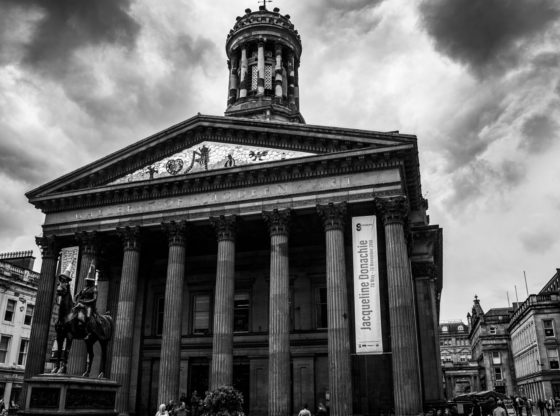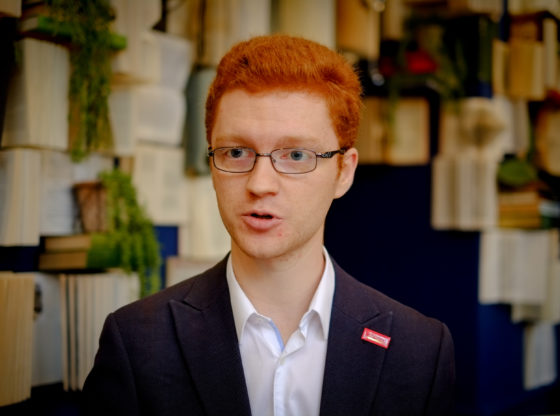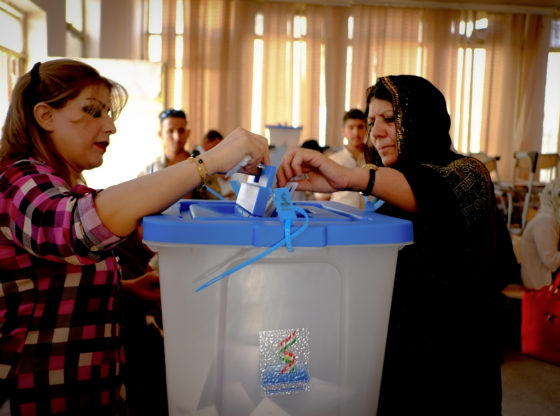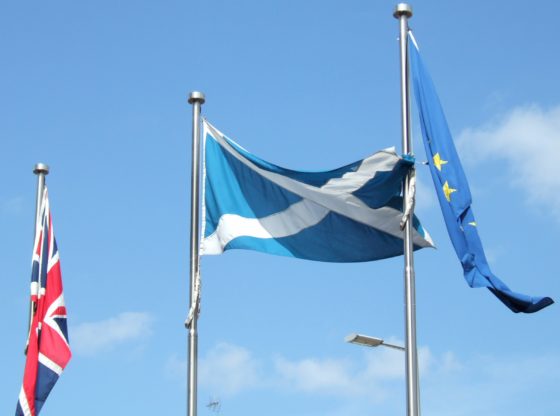The cultural sector is often subject to shifts which threaten to undermine it. In this essay, Andrew Ormston reflects upon the uncertainties thrown up by Brexit and examines what Scotland’s cultural organisations can learn from organisations elsewhere which manage to sustain themselves amidst challenging institutional, political, and funding circumstances.
We live in precarious times and the cultural sector is far from immune. Reductions in the public purse and disposable income across the UK are contributing to a bleaker outlook for Scottish arts and culture organisations than in recent years. The sector is also particularly vulnerable to whatever Brexit outcome eventually emerges, through a loss of freedom of movement and barriers to market access.
So what can we learn from cultural organisations operating where the institutional, political, and funding environment has always been more hostile? The era when cultural practitioners in western Europe may have considered themselves as enshrining best practice is over. In the UK in particular, our mixed economy skillset has been much appreciated by those grappling with reductions in state support for the arts. But will we need new approaches and skills to meet a new set of challenges? Recent work in a range of countries in the Middle East and Europe has prompted me to reflect on what lessons we could learn when contemplating a more volatile economic, social, and political environment.
FUNDING
Let’s begin with the area of funding and funders. Scottish cultural policy is constantly developing and is clearly concerned with both supporting talent and ensuring public access to culture. The debate about instrumentalism and art in Scotland goes around in circles, but the challenge of demonstrating the artistic, social, and economic value of culture in a meaningful way can only become more important as cultural organisations look to diversify sources of income in response to reductions in public funding.
The challenge of demonstrating the artistic, social, and economic value of culture in a meaningful way can only become more important as cultural organisations look to diversify sources of income in response to reductions in public funding.
In countries where culture is dependent on a range of donors, they have had to sort this out. Published policy may be underdeveloped, but the cultural evaluation processes that we came across in our work in the Middle East operates to principles that would not be out of place in Scotland. They were ‘super-adaptive’ to the conditions of the arts organisation and designed to be valuable to their own planning and management.
They also used a range of qualitative methods to demonstrate the full range of social, cultural and economic value. In many cases, the evaluator was a ‘critical friend’ for the organisation. This is a much more productive approach than more traditional approaches to funder evaluation in the arts.
Innovative techniques are also being introduced as is the case with Capoeira4Refugees who have introduced the Most Significant Change model to demonstrate the transformational impact of their work, another ongoing challenge for Scottish socially engaged arts organisations.
INFRASTRUCTURE
There is also the question of infrastructure. Most cultural activity needs a space to make it happen. But it can be easy to price artists and arts organisations out of an area, or even a facility designed for their use. The much remarked on creative exodus from London is one symptom, but so is a venue manager forced to maximise hire income at the expense of local artists. Making better use of publicly owned infrastructure is another common theme in countries like Egypt, Palestine, or Jordan, where libraries, universities, or schools are under-occupied but where access to cultural facility is limited.
A good example of this was the work of The House of Tales and Music in Amman. The city has an impressive number of libraries and librarians but a challenge in connecting them up with local people, and young people in particular. Conversely, there is a shortage of dedicated arts facilities for participative work. This project is a pilot, working with eight local libraries and their staff in Amman to develop the variety of activities offered to children.
The barriers are considerable, with buildings not fit for purpose and staff that lack expertise and confidence in activities-based work. The project team’s experience in grappling with cohorts of staff resistant to change and new to working with artists, and with improving buildings to accommodate creative work, has value far beyond the municipality.
If local young people can work with industry professionals, and produce meaningful work of professional standard in a town as traumatised as Mafraq…why can’t Scotland’s more remote communities have access to this kind of activity?
In other parts of Jordan, the devastation of conflict is more directly apparent. We visited a leisure centre in Mafraq, close to the Syrian border, that is now a Royal Film Commission film centre for training children and young people in drama, acting, screenwriting, and the art of film-making. This re-purposing of infrastructure from a more peaceful and prosperous time was transforming the lives of young people and their families. If local young people can work with industry professionals, and produce meaningful work of professional standard in a town as traumatised as Mafraq, in a leisure centre that is basically a shell, why can’t Scotland’s more remote communities have access to this kind of activity?
There are also European examples of how instability can stimulate the mainstream of cultural provision. Pilar González Almansa of Madrid University has looked at this trend in relation to Madrid’s theatre scene, where “precariousness has encouraged the creation of professional associations, generated a sense of community in the business and has created a fertile ground for proposals to legitimate individual works and the theatre sector as a whole”.
She reports on a dramatic reduction in public funding for theatre leading to something of a crisis in major theatres, but a dramatic increase in fringe theatre, where producers reduce risk by producing more plays in much smaller venues.

This approach is a mirror image of some of the work we encountered in the Middle East, such as ma3mal612 in Jordan, where experienced television and film producers Ehab al Kahatib and Sawsan Darwaza are now leading a socially engaged project that aims to both train and empower young artists to create a workforce for the future that is politically and socially aware.
This need to create practitioners that are accomplished artists, skilled in working in socially engaged settings, and familiar with the communities in which they operate, remains a challenge in Scotland. We have excellent and relatively accessible arts education, but this doesn’t automatically translate into artists that can work in schools, hospitals, or community projects.
This was clearly a priority for many of the Middle Eastern projects we worked with. Hebron Yes Theatre are developing an approach to social enterprise to allow it to work throughout the West Bank alongside creating a cohort of performers and artists that can deliver the work. We saw performers recruited from the local community who now have the skills in puppetry and acting to be invited to international festivals, and the knowledge to use Theatre of the Oppressed techniques with local traumatised children.
This need to create practitioners that are accomplished artists, skilled in working in socially engaged settings, and familiar with the communities in which they operate, remains a challenge in Scotland.
Elsewhere in Palestine, the Palestinian Circus School have developed a professional cohort of talented circus performers from young people in Birzeit and the surrounding area. In Cairo, the BuSSY theatre project trains its own trainers and professionals to work with theatre and key socio-political issues, and in the same city a contemporary dance company has been created through establishing an accredited course to train dancers that also have a commitment to working with the communities where they live.
Many of these projects and organisations adopt a collective or participative approach to governance reflecting both a need to be close to the communities they work in, and to be fleet of foot in responding to outside pressures. Alwan Wa Awtar works with arts, crafts and young people in Egypt and would not have survived without the ability to both rapidly mobilise community support, and to expand or contract in response to dramatic fluctuations in funding.
We are seeing changes to historic patterns of revenue support in the arts in Scotland - adaptability is likely to be a key part of a Scottish arts organisation’s toolkit in the future. The almost universal model of establishing arts organisations, as limited companies by guarantee with charitable status, may not always be the best model for an organisation that might need to frequently change its shape and approach. Similarly, a hierarchical management structure and a board of accountants, lawyers, and marketing experts may not suit an organisation that must reinvent itself from time to time.

Scotland’s cultural professionals can rightly point to their existing commitment to international work and networks. They can also point to a lack of money and capacity to pursue working relationships abroad that don’t directly translate into production or cash. However with current political developments, we know we need to work harder to be more international in order to support the quality and sustainability of what we do. This work needs to be embedded in a reciprocal approach and a preparedness to learn from the work of others.
International links do not need to be mediated through our national institutions. A good starting point would be to encourage Scotland’s cultural professionals in strengthening connections with the key international networks in their field. It is in these networks that much of the learning, research, and exchange that supports developing practice occurs. It is also where opportunities to connect with, and learn from, peers around the world can be found.
Andrew Ormston is an international consultant and expert with extensive experience in strategic leadership, project development and review across the cultural and creative industries. Prior to this, he worked as director of culture for the municipalities of Birmingham, Reading and a Central London Borough. Andrew has also managed a number of venues, festivals and arts development projects. Active research interests include interdisciplinary projects, qualitative evaluation and research, international cultural policy, and creativity as a tool that empowers young people. Andrew is an Honorary Fellow of the School of Social and Political Science at Edinburgh University, a Fellow of the Royal Society for the Arts, and a Board member of NN Contemporary Arts, Berwick Film & Media Arts Festival and SURF: Scotland’s Regeneration Network.
Feature image: “In Search of Vanished Blood”. Projection at the Edinburgh Fringe Festival. Image: Nalini Malani [CC BY 2.0]











